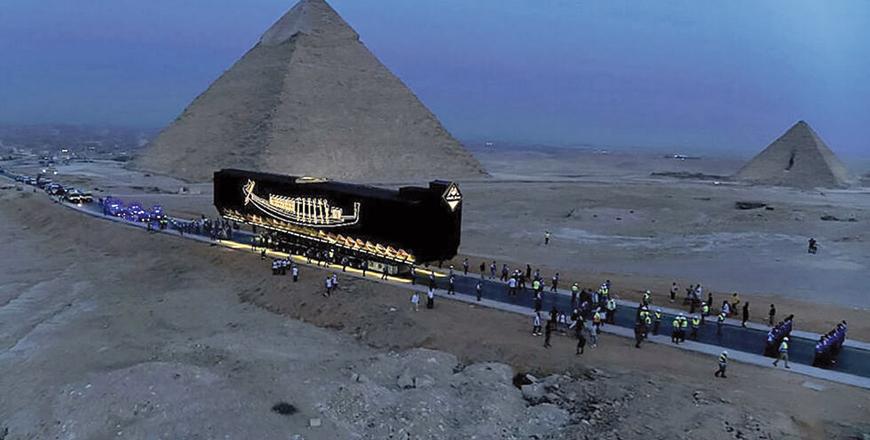You are here
Egypt archaeologist criticises pyramid void 'discovery'
By AFP - Nov 04,2017 - Last updated at Nov 04,2017

This file photo taken on August 31, 2016, shows Egyptians riding their carts past the Great Pyramid of Cheops, also known as the Pyramid of Khufu, on the Giza Plateau, on the southern outskirts of the capital Cairo (AFP photo)
CAIRO — An Egyptian archaeologist overseeing a project to scan a pyramid for voids on Saturday criticised the announcement of a discovery of a passenger plane-sized cavity in the Great Pyramid.
Scientists with the ScanPyramids project revealed on Thursday that the void discovered with subatomic particle scans was the first major structure found inside the pyramid since the 19th century.
It is thought to be at least 30 metres long and located above the "Grand Gallery" — a sloped corridor almost 50 metres long and nine metres high which links Khufu's burial chamber at the pyramid's centre to a tunnel leading outside.
The findings were published by the science journal Nature.
But Zahi Hawass, who heads the ScanPyramids science committee overseeing the project, said there was no new "discovery".
He said he had met other scientists from ScanPyramids who "showed us their conclusions, and we informed them this is not a discovery", he told AFP.
"The pyramid is full of voids and that does not mean there is a secret chamber or a new discovery," he said.
In a statement on Friday, the head of the government's antiquities council Mustafa Waziri also criticised the announcement.
"The project has to proceed in a scientific way that follows the steps of scientific research and its discussion before publication," he said.
The monument — 139 metres high today, and 230 metres wide — was erected as a tomb for Khufu, also known as Cheops. To this day, nobody knows quite how it was built.
The void, said co-author Kunihiro Morishima from Nagoya University in Japan, “was not known by anyone until now, from when the pyramid was built 4,500 years ago”.
“The big void is completely closed,” he added, which means anything inside it would not have been “touched by anyone after the pyramid [was] built”.
The pharaohs of ancient Egypt built these monumental tombs for themselves, complete with sarcophagus to hold their embalmed mummies, and stocked with everything they could require for the afterlife, including food, clothing and jewellery.
Related Articles
CAIRO — A group of Egyptian and foreign experts launched Sunday a new bid to unravel the "secrets" of the pyramids, including a search for h
CAIRO — A plank of wood believed to be from the boat of an ancient Egyptian king has been unearthed near the Great Pyramid at Giza, archaeol
CAIRO — Egypt has transported the Pharaoh Khufu’s intact solar boat dating back some 4,600 years to the country’s soon to be unveiled grand


















